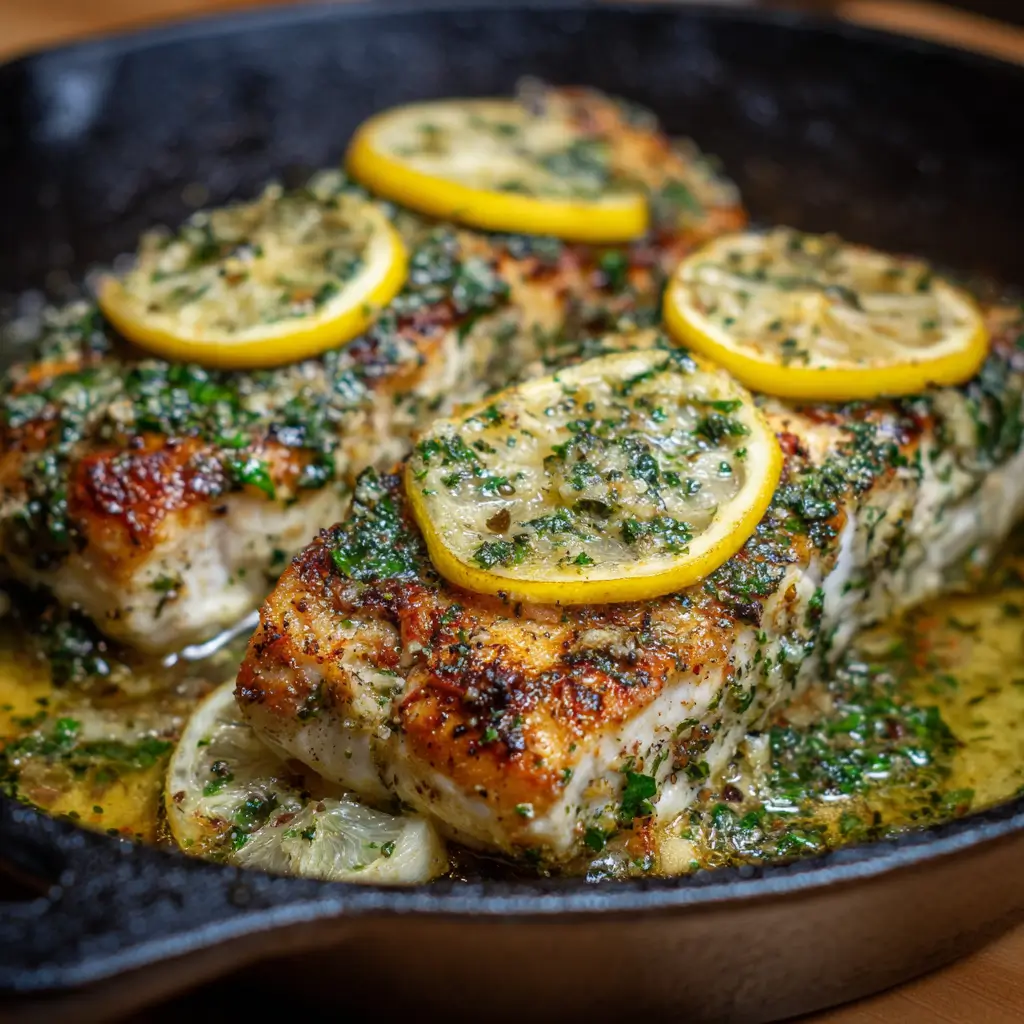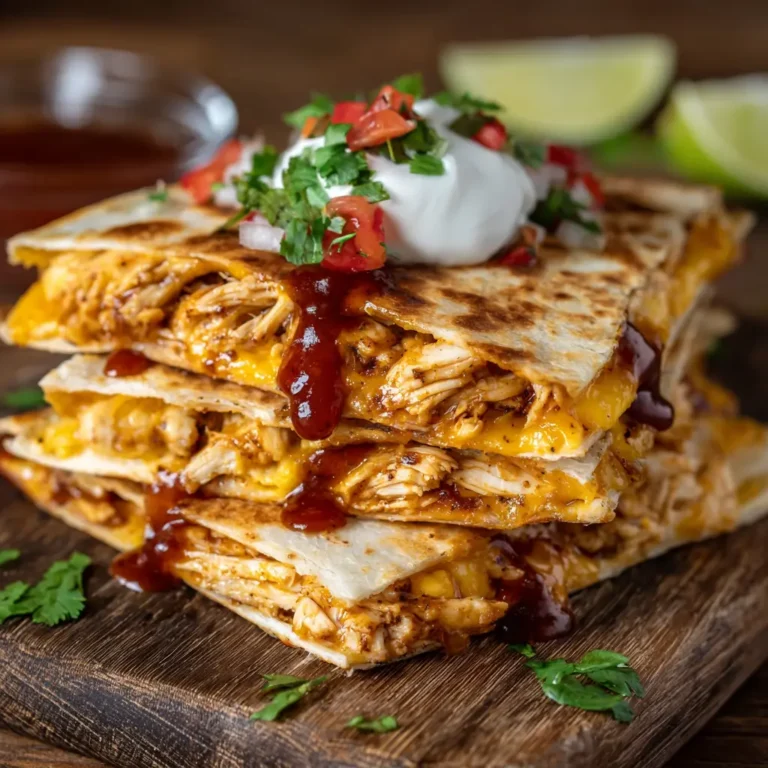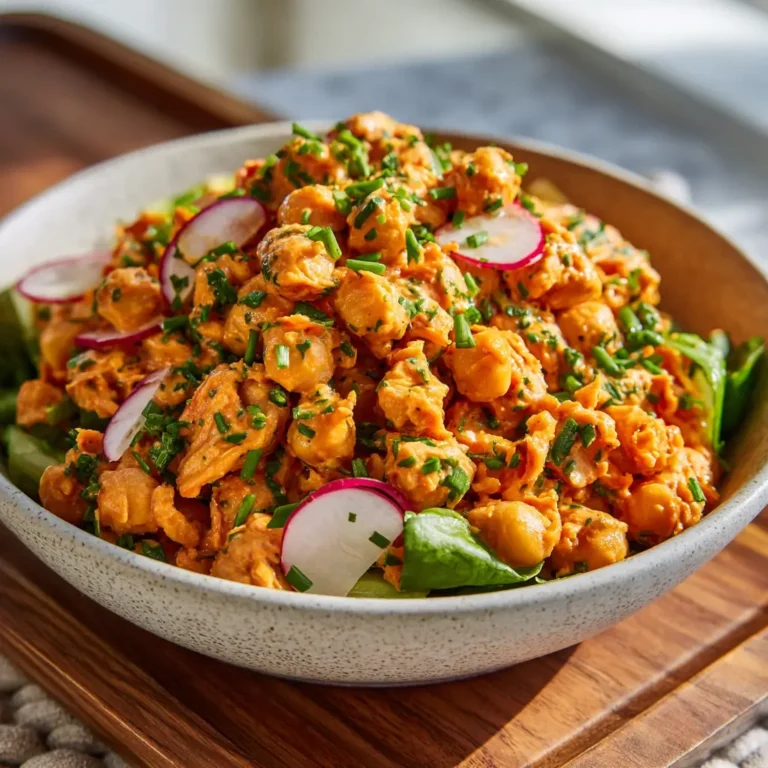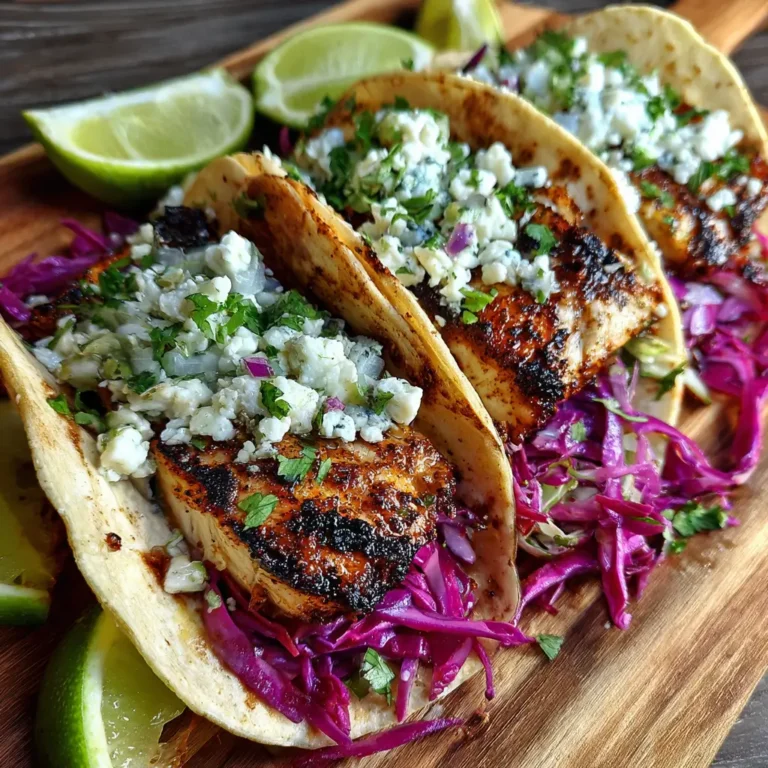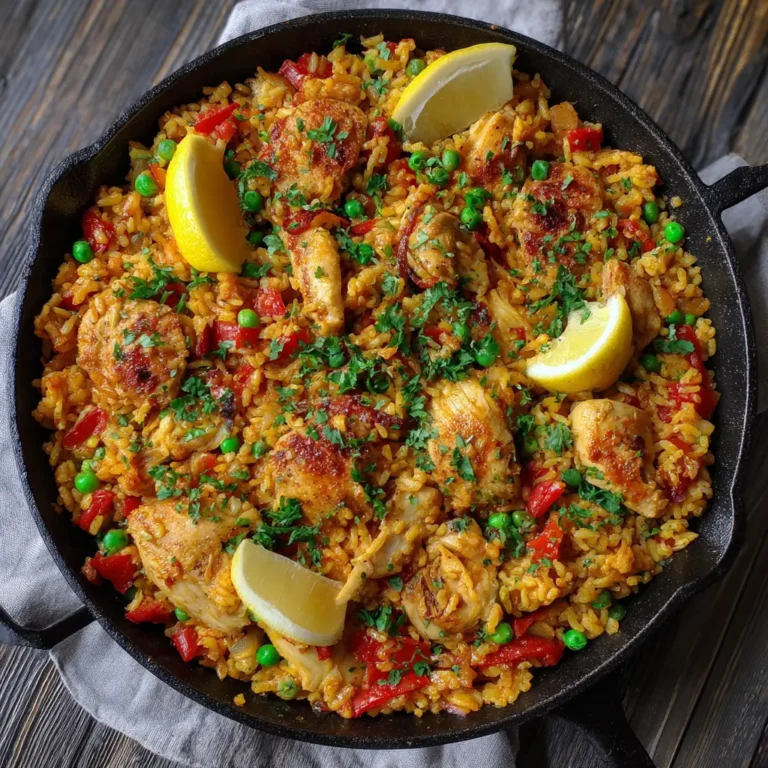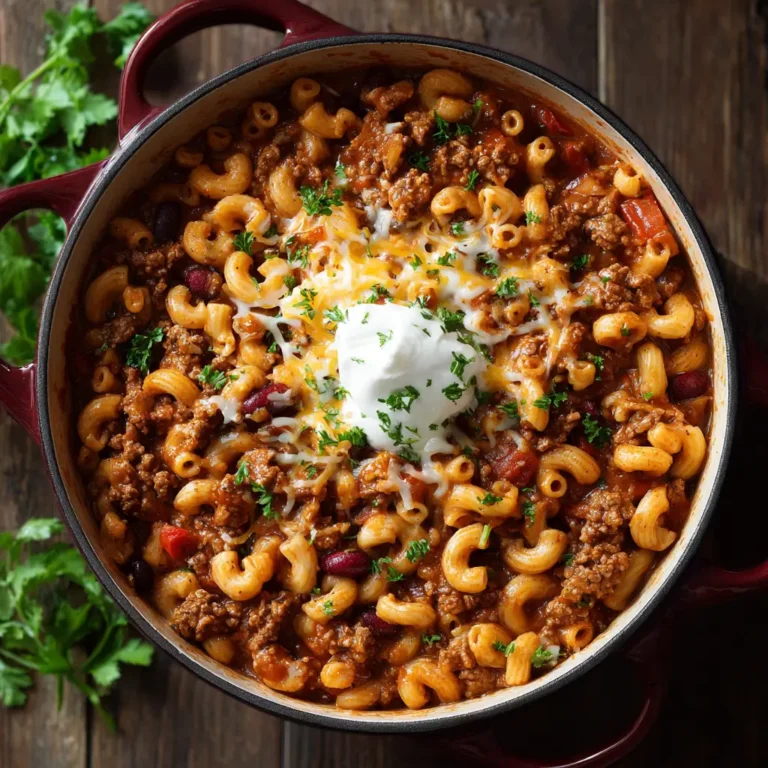Baked Mahi‑Mahi with Garlic‑Herb Butter
Baked Mahi‑Mahi with Garlic‑Herb Butter
Baked Mahi-Mahi with Garlic-Herb Butter is a light, flavorful, and healthy seafood dish that brings the taste of the ocean straight to your dinner table. With its delicate texture and mild, slightly sweet flavor, Mahi-Mahi is an excellent canvas for rich, aromatic ingredients like garlic, fresh herbs, and butter. This recipe combines simplicity and elegance, making it perfect for weeknight dinners as well as special occasions. Whether you’re a seasoned home cook or just starting out in the kitchen, this dish offers a delicious way to enjoy high-quality protein while keeping things nutritious and satisfying.
The History
Mahi-Mahi, whose name means “strong-strong” in Hawaiian, is a popular fish found in tropical and subtropical waters around the world, particularly in the Pacific and Atlantic Oceans. Known for its firm texture and mild taste, it has become a staple in coastal cuisines across Hawaii, the Caribbean, and Latin America. Historically, Mahi-Mahi was caught by indigenous fishermen using hand lines and spears, but today it’s commonly harvested by sustainable pole-and-line methods that minimize environmental impact.
While baking fish is an ancient cooking technique used by many cultures, the modern preparation of Mahi-Mahi with garlic-herb butter reflects a fusion of culinary traditions. The use of butter and herbs draws from French and Mediterranean influences, where aromatic compounds like parsley, thyme, and garlic are used to elevate simple proteins. Over time, chefs and home cooks alike have adapted these techniques to suit lighter, health-conscious palates—leading to recipes like this baked version, which preserves moisture and flavor without deep frying or heavy sauces.
Ingredients Breakdown
The beauty of this recipe lies in its balance of fresh, high-quality ingredients that enhance rather than overpower the natural flavor of the fish. Here’s a detailed look at each component:
- Mahi-Mahi Fillets: Look for fresh, skin-on fillets about 6–8 ounces each and 1 inch thick. The skin helps hold the fish together during baking and adds a subtle crispness when broiled at the end.
- Unsalted Butter: Using unsalted butter allows you to control the salt level. It forms the base of the herb compound, adding richness and helping carry the flavors into the fish.
- Fresh Garlic: Minced garlic provides a pungent, aromatic kick. Freshly chopped is always best—avoid jarred minced garlic for optimal taste.
- Fresh Herbs: A blend of parsley, dill, chives, and optionally thyme or tarragon gives the dish brightness and complexity. Parsley offers earthiness, dill brings a slight anise note, and chives add mild onion flavor.
- Lemon Juice and Zest: Fresh lemon juice adds acidity to cut through the richness of the butter, while the zest intensifies citrus aroma without extra liquid.
- Olive Oil: Used both to coat the baking dish and brushed on the fish, olive oil helps prevent sticking and promotes even browning.
- Seasonings: Sea salt and freshly ground black pepper are essential. Optional additions include paprika for color or a pinch of cayenne for heat.
- White Wine (optional): A splash of dry white wine such as Sauvignon Blanc can be added under the fish before baking to create a gentle steam and infuse additional depth.
Step-by-Step Recipe
- Preheat the Oven: Set your oven to 375°F (190°C). This temperature ensures gentle, even cooking without drying out the fish.
- Prepare the Baking Dish: Lightly grease a glass or ceramic baking dish (9×13 inches) with olive oil or non-stick spray. Optionally, line it with parchment paper for easier cleanup.
- Make the Garlic-Herb Butter: In a small bowl, combine ½ cup (1 stick) softened unsalted butter, 4 cloves finely minced garlic, 2 tablespoons chopped fresh parsley, 1 tablespoon chopped dill, 1 tablespoon chopped chives, 1 teaspoon lemon zest, 1 tablespoon fresh lemon juice, ¼ teaspoon sea salt, and ¼ teaspoon black pepper. Mix thoroughly until smooth and well combined.
- Prepare the Fish: Pat the Mahi-Mahi fillets dry with paper towels. This step is crucial—it ensures better browning and prevents steaming. Season both sides lightly with salt and pepper.
- Arrange the Fillets: Place the fillets skin-side down in the prepared baking dish. If using white wine, pour ¼ cup over the bottom of the dish now.
- Add the Butter Mixture: Spoon a generous dollop of the garlic-herb butter onto the center of each fillet. Use the back of the spoon to gently spread it across the top, allowing some to drip over the sides.
- Bake: Transfer the dish to the preheated oven and bake for 15–18 minutes, depending on thickness. The fish is done when it flakes easily with a fork and reaches an internal temperature of 145°F (63°C).
- Optional Broil Finish: For a golden, slightly caramelized top, switch the oven to broil for the last 2–3 minutes. Watch closely to avoid burning.
- Rest and Serve: Let the fish rest for 2–3 minutes after removing from the oven. This allows juices to redistribute. Garnish with extra chopped herbs and a squeeze of fresh lemon juice before serving.
Tips
- Don’t Overcook: Mahi-Mahi cooks quickly and can become dry if left too long in the oven. Check early and use a meat thermometer for accuracy.
- Butter Consistency: Soften the butter to room temperature before mixing—this makes it easy to blend and ensures even distribution of flavors.
- Fresh vs. Dried Herbs: Always use fresh herbs for the butter. Dried herbs lack moisture and vibrancy and may result in a muted flavor profile.
- Skin On or Off? Keeping the skin on helps protect the flesh during baking and holds the fillet together. It can be removed after cooking if preferred.
- Even Thickness: If fillets vary in thickness, consider folding thinner pieces or arranging them so they cook evenly.
- Use a Rimmed Dish: Choose a baking dish with raised edges to contain any juices or melted butter that may seep out during baking.
- Double the Butter: Make extra garlic-herb butter and freeze it in an airtight container or ice cube tray for future use on fish, chicken, or vegetables.
Variations and Customizations
This recipe is highly adaptable based on dietary preferences, seasonal ingredients, or cultural twists:
- Dairy-Free Version: Substitute the butter with a high-quality plant-based alternative like vegan butter or coconut oil infused with herbs.
- Spicy Kick: Add ½ teaspoon smoked paprika or a finely diced jalapeño to the butter mixture for a smoky, spicy dimension.
- Mediterranean Style: Mix in sun-dried tomatoes, Kalamata olives, and capers into the topping before baking.
- Cajun Twist: Rub the fillets with Cajun seasoning before adding the herb butter for a bold, zesty flavor.
- Asian-Inspired: Replace the herbs with ginger, green onions, soy sauce, and sesame oil for a fusion twist. Use a neutral oil instead of butter.
- Stuffed Option: Create a pocket in each fillet and stuff it with the garlic-herb butter mixture for a more intense flavor infusion.
- Grilled Alternative: Instead of baking, grill the butter-topped fillets over medium heat for 4–5 minutes per side, using a grilling basket or foil to prevent flaking.
- With Vegetables: Arrange sliced lemons, cherry tomatoes, zucchini, or asparagus around the fish in the baking dish for a one-pan meal.
Health Considerations and Nutritional Value
Mahi-Mahi is not only delicious but also packed with nutritional benefits. A 6-ounce serving contains approximately:
- Calories: 230–250
- Protein: 40g – Excellent source of lean, high-quality protein essential for muscle repair and immune function.
- Fat: 6–8g – Mostly heart-healthy unsaturated fats, including omega-3 fatty acids (though less than fatty fish like salmon).
- Sodium: ~300mg (varies with added salt) – Moderate; can be reduced by limiting added salt.
- Vitamins & Minerals: Rich in niacin (B3), vitamin B6, phosphorus, selenium, and potassium.
While the garlic-herb butter adds richness, it also increases saturated fat content. To make the dish healthier:
- Reduce butter to 2 tablespoons per fillet or replace half with Greek yogurt or mashed avocado.
- Use olive oil as the primary fat and minimize dairy.
- Serve with fiber-rich sides like quinoa, brown rice, roasted vegetables, or a fresh green salad.
Mahi-Mahi is generally low in mercury compared to other large predatory fish, making it a safer choice for children and pregnant women when consumed in moderation (1–2 servings per week).
Ingredients
- 4 Mahi-Mahi fillets (6–8 oz each, about 1 inch thick)
- ½ cup (1 stick) unsalted butter, softened
- 4 cloves garlic, finely minced
- 2 tablespoons fresh parsley, finely chopped
- 1 tablespoon fresh dill, chopped
- 1 tablespoon fresh chives, chopped
- 1 teaspoon lemon zest
- 1 tablespoon fresh lemon juice
- 2 tablespoons olive oil (plus more for greasing)
- ¾ teaspoon sea salt (divided)
- ½ teaspoon freshly ground black pepper (divided)
- Optional: ¼ cup dry white wine (e.g., Sauvignon Blanc)
Directions
- Preheat oven to 375°F (190°C). Lightly grease a 9×13-inch baking dish with olive oil.
- In a medium bowl, mix together softened butter, garlic, parsley, dill, chives, lemon zest, lemon juice, ¼ tsp salt, and ¼ tsp black pepper. Stir until fully combined and creamy.
- Pat Mahi-Mahi fillets dry with paper towels. Season both sides with remaining salt and pepper.
- Place fillets skin-side down in the baking dish. Pour white wine (if using) into the bottom of the dish.
- Spoon garlic-herb butter evenly over the top of each fillet, spreading gently to cover.
- Drizzle 2 tablespoons olive oil over the fillets to keep them moist.
- Bake for 15–18 minutes, until fish is opaque and flakes easily with a fork.
- For a golden finish, broil on high for 2–3 minutes, watching carefully to prevent burning.
- Remove from oven and let rest for 3 minutes. Garnish with extra herbs and lemon wedges.
- Serve immediately with your favorite sides.
FAQ
Can I use frozen Mahi-Mahi?
Yes, but thaw it completely in the refrigerator overnight. Never bake frozen fish, as it will release too much water and cook unevenly.
How do I know when Mahi-Mahi is done?
It should be opaque throughout and flake easily with a fork. An internal thermometer should read 145°F (63°C).
Can I prepare this ahead of time?
You can make the garlic-herb butter up to 3 days in advance and store it in the fridge. Assemble the dish up to 2 hours before baking, but don’t bake it ahead—reheating can dry it out.
What sides go well with this dish?
Excellent pairings include wild rice pilaf, roasted asparagus, grilled vegetables, mango salsa, coleslaw, or a simple arugula salad with lemon vinaigrette.
Is Mahi-Mahi sustainable?
In the U.S., Mahi-Mahi caught by pole-and-line or handline methods is considered sustainable. Look for certifications like MSC (Marine Stewardship Council) or recommendations from the Monterey Bay Aquarium Seafood Watch program.
Can I use margarine instead of butter?
While possible, margarine may alter the flavor and texture. For best results, use real butter or a high-quality plant-based alternative designed for baking.
Can I double the recipe?
Absolutely! This recipe scales well. Just ensure your baking dish is large enough to hold all fillets in a single layer without crowding.
Summary
Baked Mahi-Mahi with Garlic-Herb Butter is a simple yet elegant dish that highlights the delicate flavor of fresh fish with rich, aromatic seasonings. Healthy, quick to prepare, and bursting with flavor, it’s sure to become a favorite in your weekly rotation.
